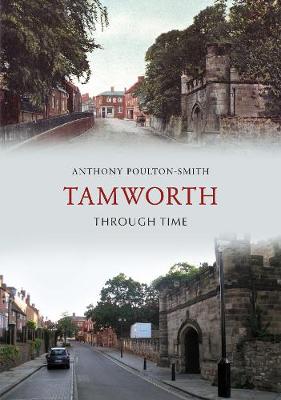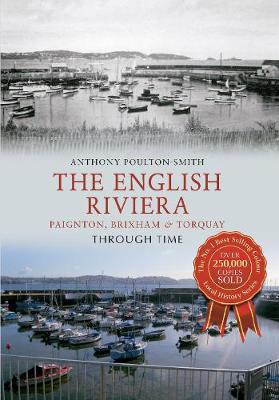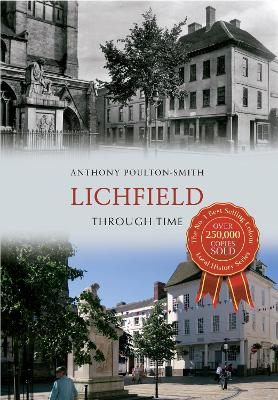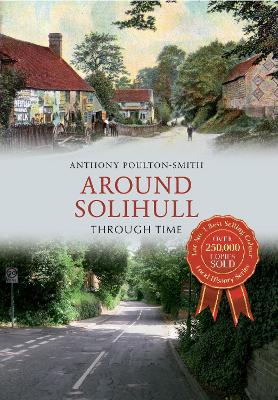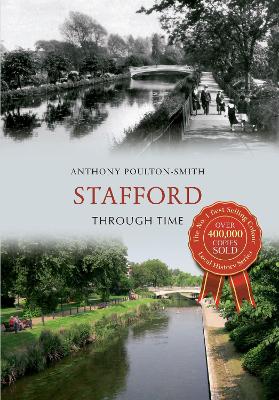Through Time
5 total works
Tamworth Through Time gives a vivid insight into the dramatic developments that have taken place in the town in the recent past. Anthony Poulton-Smith's fascinating new book recalls streets, houses and public buildings, shops, businesses and pubs that have vanished or been altered almost beyond recognition. The reader is taken on a conducted tour through the past and present streets of this ancient town, and is encouraged to compare present day streetscapes with archive photographs and other ilustrations created from the same viewpoint. The resulting contrast offers an illuminating insight into the evolution of the town over the last 200 years. It will be essential reading for anyone who is interested in how the Tamworth of yesterday evolved into the town of today.
The English Riviera: Paignton, Brixham & Torquay Through Time
by Anthony Poulton-Smith
Published 15 October 2012
The three towns of Paignton, Brixham and Torquay form the area of the Devon coast known as the English Riviera, due to the sandy beaches, mild climate and host of leisure attractions. However, all three towns have their own, unique heritage. The market town of Paignton is characterised by its Saxon origins. Its ancient church and the traditional town green, along with the beautiful beach, make for the epitome of the English family holiday. Brixham is the home of the famous Brixham Trawlers and the tourist attraction replica of Sir Francis Drake's ship the Golden Hind. Torquay is different again. With its large harbour, thriving nightlife and balmy climate, it is easy to see why it became a fashionable Victorian resort. This collection of delightful photographs explores how the towns of Torbay developed to represent the best of the British seaside tradition.
The Romans and Celts were familiar with Lichfield but the Saxons put it on the map. St Chad built a church in Lichfield after bringing his bishopric of Mercia here in the seventh century, and the first cathedral was constructed soon afterwards. Lichfield became a county in 1553, with the office of Sheriff of Lichfield, a position which continues today. During the English Civil War the Royalist stronghold was besieged twice, the second time resulting in the collapse of the cathedral's central spire. Later centuries saw Lichfield become a city famous for its intellectuals. Among the most famous were Erasmus Darwin, David Garrick, Anna Seward and, possibly most famous of them all, Dr Samuel Johnson. Within these pages not only is there a comparison to be made between old and new views, but also glimpses into some of the lives of people who have contributed to this delightful city.
Historically a part of Warwickshire, Solihull is today one of the most prosperous parts of the West Midlands conurbation. From its beginnings as a medieval market town, Silhillians throughout the ages have seen almost continuous growth, this also seen in the town's motto Urbs in Rure 'Town in Country'. During the twentieth century the population grew from 7,500 in 1901 to reach six figures in the 1960s. Since then the town centre, which had stood largely unchanged for over a century, has been brought into the twenty-first century and attracts visitors from near and far. Cast an eye over the town over the last century and see how among the changes certain landmarks remain. Compare this to the many outlying villages where Silhillians from the Victorian era would doubtless recognise their homes over a century later.
Staffordshire's county town was home to Iron Age settlers before the Romans and then the Saxons contributed to its history. The pottery production for which the county has long been famous had its foundations in Stafford - pottery owners were drawn here by the rich mineral deposits and forestry. With its castle, Ancient High House, town walls and important jail, the town has a rich history of not only places but people as well. By the eighteenth century, the potteries in Stafford were overshadowed by the more important shoe manufacturing industry, then later by electrical companies, glue producers, steam power, woodyards, military equipment and munitions. Within these pages, not only is there a comparison to be made between old and new views, but there are also glimpses into the lives of some of the people who have contributed to this historic town.
